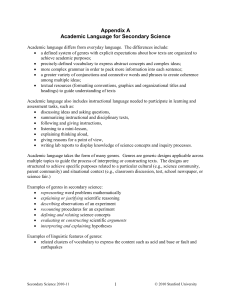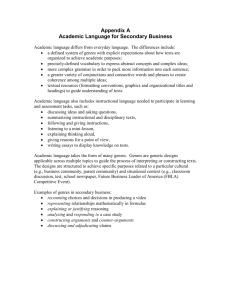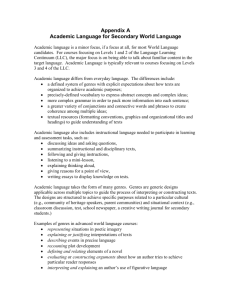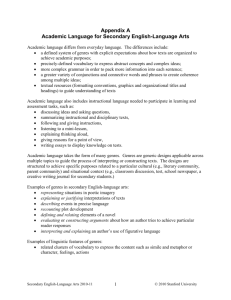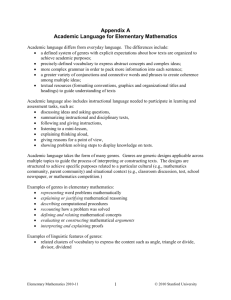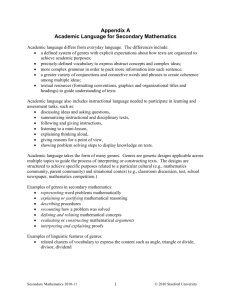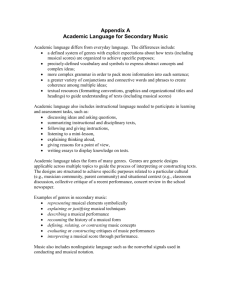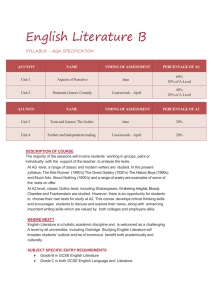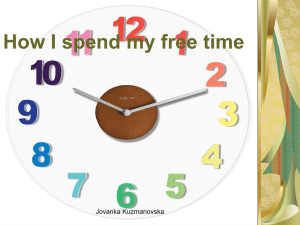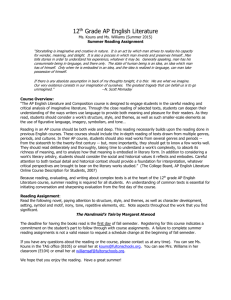Overview of English-Language Arts Teaching Event
advertisement
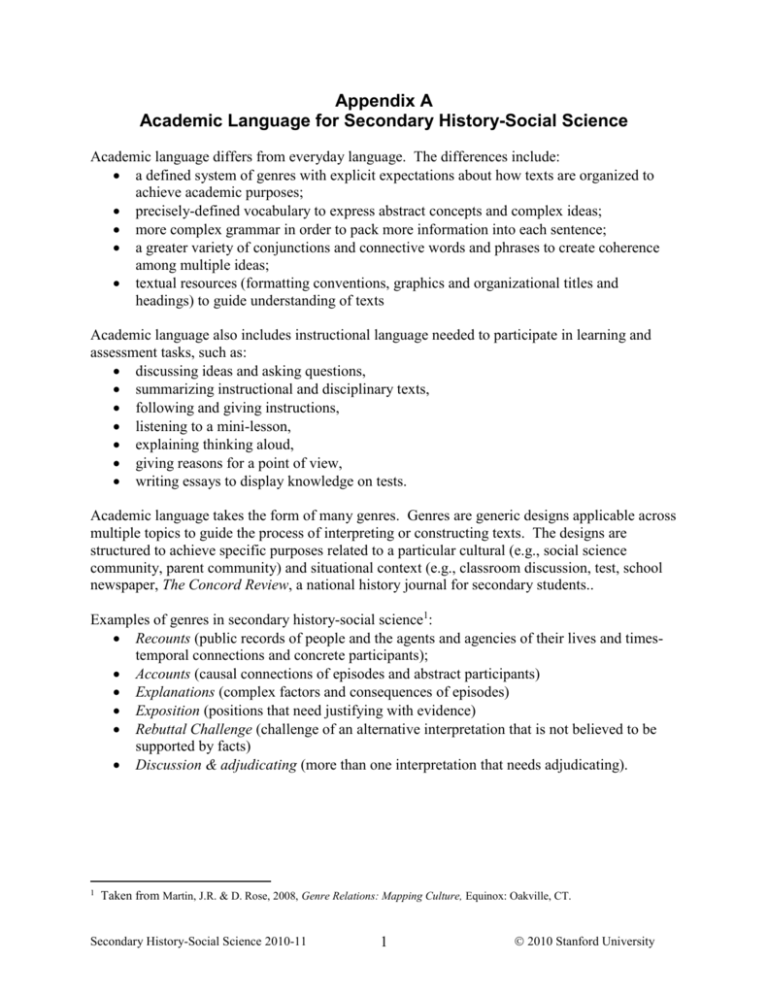
Appendix A Academic Language for Secondary History-Social Science Academic language differs from everyday language. The differences include: a defined system of genres with explicit expectations about how texts are organized to achieve academic purposes; precisely-defined vocabulary to express abstract concepts and complex ideas; more complex grammar in order to pack more information into each sentence; a greater variety of conjunctions and connective words and phrases to create coherence among multiple ideas; textual resources (formatting conventions, graphics and organizational titles and headings) to guide understanding of texts Academic language also includes instructional language needed to participate in learning and assessment tasks, such as: discussing ideas and asking questions, summarizing instructional and disciplinary texts, following and giving instructions, listening to a mini-lesson, explaining thinking aloud, giving reasons for a point of view, writing essays to display knowledge on tests. Academic language takes the form of many genres. Genres are generic designs applicable across multiple topics to guide the process of interpreting or constructing texts. The designs are structured to achieve specific purposes related to a particular cultural (e.g., social science community, parent community) and situational context (e.g., classroom discussion, test, school newspaper, The Concord Review, a national history journal for secondary students.. Examples of genres in secondary history-social science1: Recounts (public records of people and the agents and agencies of their lives and timestemporal connections and concrete participants); Accounts (causal connections of episodes and abstract participants) Explanations (complex factors and consequences of episodes) Exposition (positions that need justifying with evidence) Rebuttal Challenge (challenge of an alternative interpretation that is not believed to be supported by facts) Discussion & adjudicating (more than one interpretation that needs adjudicating). 1 Taken from Martin, J.R. & D. Rose, 2008, Genre Relations: Mapping Culture, Equinox: Oakville, CT. Secondary History-Social Science 2010-11 1 2010 Stanford University Examples of linguistic features of genres: related clusters of vocabulary to express the content such as government, governing, govern connector words that join sentences, clauses, phrases and words in logical relationships of time, cause and effect, comparison, or addition2 cohesive devices that link information in writing and help the text flow and hold together3 grammatical structures such as cause-effect relations (The ___ resulted in….); passive voice, nominalizations where verbs are turned into nouns like elect into election to help condense text and make connections between sentences as in “ George Washington was elected president. His election…” text organization strategies Examples of connector words for different purposes: Temporal: first, next, then Causal: because, since, however, therefore Comparative: rather, instead, also, on the other hand Additive: and, or, furthermore, similarly, while Coordinating: and, nor, but, so Example of text organization strategies for increasingly complex arguments4: • Simple argument: point/proposition, elaboration. An example is: The American revolution succeeded because of the support from France. • Argument with evidence: Proposition, argument, conclusion • Discussion: statement of issue, arguments for, arguments against, recommendation • Elaborated discussion: statement of issue, preview of pro/con, several iterations of point/elaboration representing arguments against, several iterations of point/elaboration representing arguments for, summary, conclusion 2 Knapp, P. and Watkins, M. (2005). Genre, text, grammar: Technologies for teaching and assessing writing. Sydney: University of New South Wales Press, Ltd. p. 49 3 Knapp & Watkins, op. cit., p. 47 4 Adapted from Knapp & Watkins, op. cit., pp. 190-195. Secondary History-Social Science 2010-11 2 2010 Stanford University
